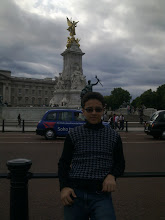Choices have to made among options that are available. This is called economic problem. Economic problems can be studied at different levels. We can study decisions made by households, small firms. Household is a group of people whose expenditure decisions are linked.
We have two types of economics:
- Macro economics- Government policies
- Micro economics- individual decisions
In economics we have 4 factors of production(economy produces a whole range of goods and services to accomplish the needs of it's population) which are:
- Land -- it's rewarded by Rent
- Labor-- it's rewarded by Wages
- Capital-- it's rewarded by interest rates
- Enterprise-- it's rewarded by profit
When individual workers, firms, regions, or a whole economy concentrates on producing goods and services and not others. This is called Specialisation. Specialisation lies at the heart of the modern economy. We trade, which involves exchange of goods and services. For example we exchange goods for other goods. Also we exchange goods or we provide services for other goods, but no money is involved, this is called barter.
Benefits of Specialisation:
- an increase in the output's of goods and services -->> country provides everything it needs. Raising living standards -> more output from resources.
- Widening the range of goods.( For example bananas or another types of fruit, that cannot be grown in UK) After the banana sales more bananas can be purchased.
- Exchange between developed and developing economies. Country's like china does the most of exports.
Why trade?
Because trade allows countries to specialise in products which they are able to make or grow properly.(factors of production)
Risks of Specialisations :
- Finite resources -> such as oil, copper -> economy suffers-> unless revenues from exports are invested sagely.
- De- industrialisation -> loss of manufacturing capacity and jobs -> Many jobs are lost.
- Bad weather -> Bad crops -> reduces incomes -> economic chaos
- Taste or needs -> less exports
- Political side of economy -> like tsunami, hurricane etc.
Division labor- it's when the production process is broken down into seprate jobs.
For example Producing knits, in the textile industries are more efficient if the production process was split up into different tasks.
We use an economic model, which is production possibility curve to show how resources are allocated. PPC shows the maximum quantities of different combination's of output.
A to B is sacrificing the product A and producing more of the product B.
Also a trade-off is involved here. Trade- off means weather to give up a product for another product.
As you can see in point D, we are producing the same amount of Consumer goods as in point C. We have increase in ability to produce consumer goods.
This graph shows us the Productive potential, which means the maximum output that economy can produce.
Change in Productive potential causes Economic growth.
lity to produce consumer goods.

The market economy
In the market economy resources are allocated by the forces of demand and supply. We have price system, it's a method of allocating resouces by the free movement of prices. Government has little involment in this process.
For example:
Excess supply -> fall in price -> firms less willing to pay -> Increase in price -> More firms willing to pay -> Increase in supply -> Fall in price -> firms less willing to pay and cycles around.
We have command economy and mixed economy
Command economy is when most resources are state owned nad allocated centrally. Government has a central role in all decisions that are made. Government and it's organisations are responsible for the allocation od resources. Government intervention. For example meat and bread, are heavily subsidised to keep it's price level low.
Mixed economy- it's when resources are allocated by mixture of markets and public sector involvement. Decisions involve an interaction between firms, labor and the government, mainly through the market mechanism.




No comments:
Post a Comment